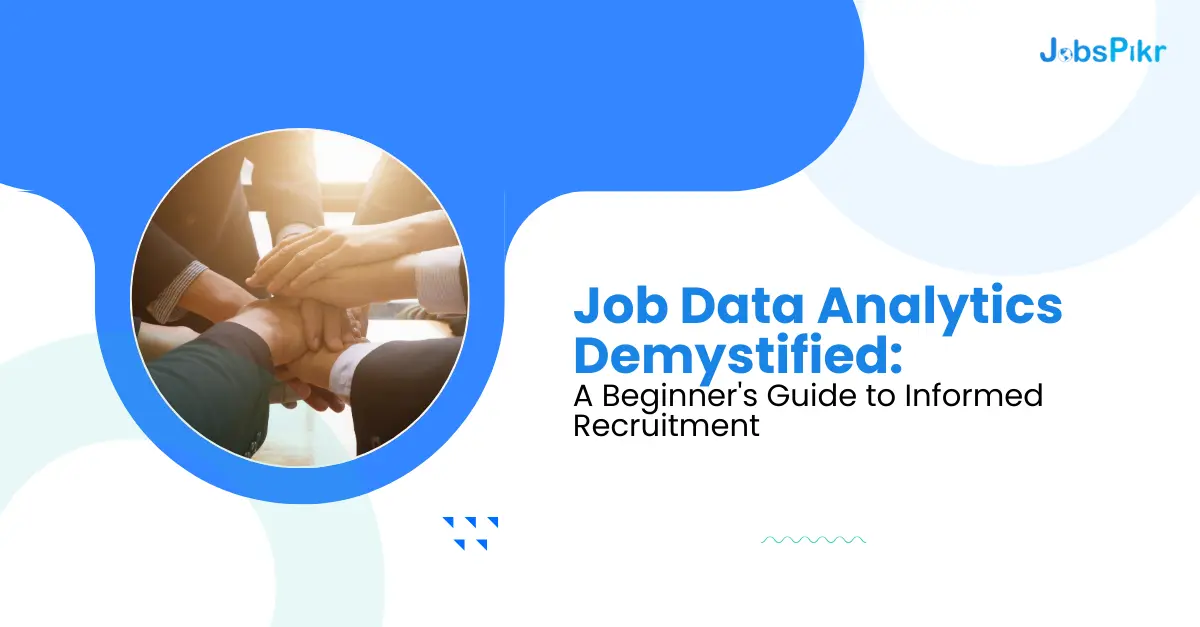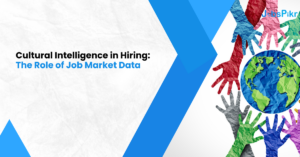Understanding Job Data Analytics
At its core, Job Data Analytics refers to the process of collecting, processing, and analyzing employment-related data to inform recruitment decisions. This data can range from resume parsing, applicant tracking, to social media profiling, and workforce trends. By harnessing the power of analytics, recruiters can identify patterns, predict hiring outcomes, and ultimately, attract the right talent.
The Role of Analytics in Recruitment
In recent years, analytics has had an important role to play, especially in recruitment. From unlocking a deeper understanding of the talent landscape to guide strategic planning, streamlining candidate screening to, predict future needs, and promoting diversity & inclusion within your workforce, analytics is crucial
1. Strategic Planning: Analytics helps in understanding the broader trends in the job market, including demand for specific skills and roles. This enables organizations to align their hiring strategies with market realities.
2. Efficient Screening: With the aid of algorithms, analytics tools can quickly sift through vast numbers of applications to identify the most suitable candidates, saving time and resources.
3. Predictive Analysis: By analyzing past hiring data, analytics can predict future hiring needs and trends, helping companies to proactively plan their recruitment efforts.
4. Diversity and Inclusion: Data analytics can also play a crucial role in promoting diversity by identifying bias in recruitment processes and suggesting improvements.
Implementing Job Data Analytics
To begin implementing job data analytics, follow these steps –
1. Define Your Objectives: Clearly understand what you want to achieve with analytics, whether it’s improving the quality of hires, reducing time-to-hire, or enhancing diversity.
2. Gather the Right Data: Collect relevant data from your recruitment processes, including applicant tracking systems, HR software, and social media channels.
3. Choose the Right Tools: Select analytics tools that align with your objectives and integrate well with your existing systems.
4. Analyze and Act: Regularly review the data and insights generated to refine your recruitment strategies continually.
Challenges and Considerations
While job data analytics has its merits, it also comes with its challenges. Some of them are –
1. Data Privacy: Uphold data privacy regulations and respect candidate privacy rights to maintain trust and transparency. (Source: General Data Protection Regulation (GDPR)
2. Talent Acquisition: Invest in training your recruitment team to interpret and utilize JDA effectively. Consider hiring data analysts if needed.
3. Data Quality: Garbage in, garbage out. Ensure the quality and consistency of your data to yield accurate and meaningful insights.
Conclusion
Job Data Analytics is transforming the recruitment landscape, offering unprecedented insights that lead to more informed hiring decisions. By understanding and implementing these analytics, recruiters can not only streamline their processes but also ensure a better match between candidates and roles, driving organizational success.
FAQ:
What Are the Challenges of Analyzing Job Market Data and How Can They Be Overcome?
Analyzing job market data poses several challenges for enterprises, including dealing with large data volumes, ensuring data accuracy, and interpreting data effectively. Here’s how these challenges can be overcome:
Data Volume:
- Challenge: Managing large volumes of job market data efficiently.
- Strategy: Use data aggregation and automation tools.
- Tool: JobsPikr collects and processes large volumes of data automatically, saving time and effort.
Data Accuracy:
- Challenge: Ensuring data reliability and accuracy.
- Strategy: Implement data validation techniques.
- Tool: JobsPikr employs advanced validation algorithms to ensure data accuracy.
Interpretation:
- Challenge: Extracting actionable insights from complex data.
- Strategy: Utilize data analytics and visualization techniques.
- Tool: JobsPikr provides intuitive dashboards and analytics tools for easy data interpretation.
Timeliness:
- Challenge: Accessing timely job market data.
- Strategy: Use real-time data collection and analysis tools.
- Tool: JobsPikr offers real-time access to job market data, ensuring timely insights.
Data Integration:
- Challenge: Integrating job market data with existing systems.
- Strategy: Employ data integration tools.
- Tool: JobsPikr seamlessly integrates with existing systems and tools for easy data integration.
by leveraging tools like JobsPikr, enterprises can overcome common challenges in analyzing job market data and gain valuable insights to make informed decisions.




